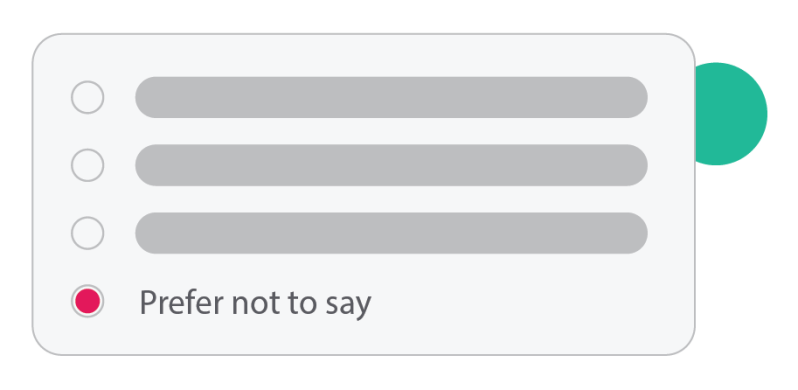Inclusivity is not just a buzzword; it is a critical component of any organization that strives to serve a diverse audience. At AudienceView, we understand this importance and aim to integrate inclusivity into our products to be seamlessly adopted by our clients. This article will explore best practices concerning inclusivity, including the correct handling of pronouns and gender, consolidating individuals into households, demographic collection for grants, and maintaining a broad focus on inclusivity throughout the entire process.
Recognizing Pronouns and Gender Diversity
In a world that increasingly acknowledges the spectrum of gender, it is crucial for organizations to respect individuals’ preferred pronouns and gender identities. This extends to every aspect of communication, including ticketing.
To quote a previously published piece of ours, “what this comes down to is treating your customers with respect.”
When collecting personal information during ticket sales, a good practice is to include an optional field for customers’ pronouns (he/him, she/her, they/them, etc.). Making this a non-mandatory field respects those who may not wish to disclose this information.
When it comes to gender, it’s best to provide an inclusive range of options, including male, female, non-binary, prefer not to say, and an open field for those who wish to self-identify. This practice sends a clear message to your audience that you respect and value their identities, creating a more welcoming and inclusive environment.
Missing Customizable Fields in Your Current Software?
Combining Individuals into Households
When selling tickets or accepting donations, combining individuals into households can streamline the process and create a more comprehensive view of your audience. However, don’t make assumptions based on last names or addresses. As shown below, our systems allow for a wide variety of relationships to be assigned between patrons.
This approach respects the complexity and diversity of modern living arrangements and helps to ensure that all customers feel seen and understood.

Collecting Demographics for Grants
Grant applications often require demographic information about the audiences served. However, this need must be balanced with respect for individual privacy and autonomy. When collecting this data, it’s essential to communicate why it’s being gathered and how it will be used.
Make this process optional and always provide a ‘prefer not to say’ choice. This approach respects individuals who may not be comfortable sharing such information while still allowing you to gather useful data for your grant applications.
Remember, it’s crucial not to use this demographic data for any other purpose without explicit consent from the individual. This respect for personal data not only aligns with privacy laws but also promotes an environment of trust between your organization and its audience.

Inclusivity as a Core Principle
True inclusivity goes beyond individual practices; it should be a core principle guiding your organization’s approach to ticket sales and beyond. Being as inclusive as possible also means continually learning, adapting, and evolving. Listen to feedback from your audience and stay informed about best practices for inclusivity in your industry.
At AudienceView, we believe that everyone should feel welcomed and represented. By implementing these inclusive practices into your ticket-selling process, you can help build a more diverse and engaged audience, provide a better customer experience, and ensure that your organization is a place where everyone truly feels seen and valued. Inclusivity is more than a strategy; it’s a commitment to empathy, respect, and understanding that benefits everyone involved.
